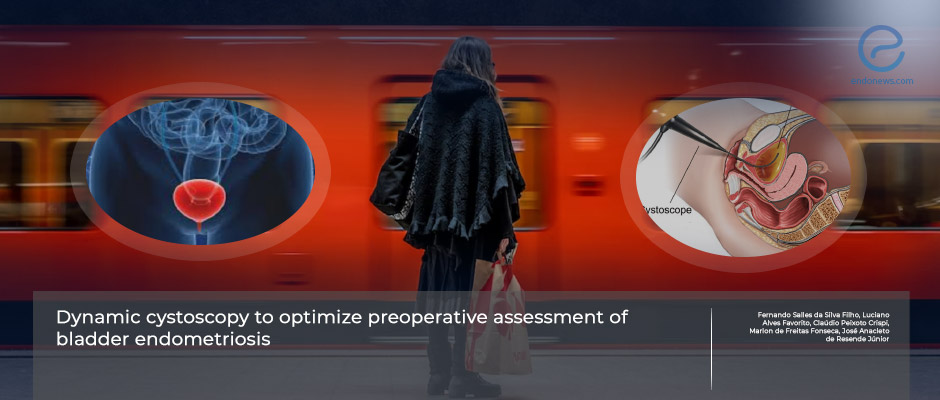Importance of dynamic cystoscopy for bladder endometriosis.
Mar 28, 2023
Dynamic cystoscopy beats MRI and ultrasound in diagnosing bladder endometriosis.
Key Points
Highlights:
- Combining cystoscopy with bimanual examination increases its positive predictive value up to 95%.
Importance:
- The study shows the importance of cystoscopy when bladder endometriosis is suspected.
What's done here:
- A cross-sectional observational prospective study from the data of patients who have undergone surgery between 2011 and 2022.
- A cystoscopy with a bimanual examination dynamic cystoscopy has been applied to all included patients which allowed the location of possible deep nodules in the posterior bladder wall.
- The finding was classified into two types: Type 1 lesions included extrinsic nodules in the bladder wall that did not extend beyond the muscular layer and Type 2 for lesions that affected the mucosa and were seen as bluish masses.
- Sensitivity, specificity, positive predictive value (PPV), and negative predictive value (NPV) have been calculated by comparing laparoscopic findings.
Key Results:
- 157 patients have been included in the study and 41 had abnormalities in dynamic cystoscopy.
- The sensitivity and specificity of the test were found ad 58.21% and 97.78%, respectively.
- PPV was 95.12%, and NPV was 75.86% referring a 2 times higher rates when compared to ultrasound and MRI.
- The presence of any lesions in the dynamic cystoscopy had a diagnostic odds ratio (OR) of 61.28 for bladder endometriosis.
- When a type 2 lesion has been identified the odds ratio of being undergone a partial cystectomy was 9.01 when compared to type 1 lesions.
Limitations:
- The number of cases included is low but when the rate of bladder endometriosis among all endometriosis cases, which is around 1%, is considered, the results still look feasible to be measured as a suggestion.
Lay Summary
Bladder endometriosis is a rare type of endometriosis but when diagnosed it requires extensive surgical procedures which include bladder resections. Thus, diagnosis and proper treatment are vital.
In the study conducted in Brazil, the authors questioned the accuracy of applying bimanual examination combined cystoscopy to deep infiltrative endometriosis patients.
A cross-sectional observational prospective study was conducted and data from patients who have undergone surgery between 2011 and 2022 have been collected. A cystoscopy with a bimanual examination dynamic cystoscopy has been applied to all included patients which allowed the location of possible deep nodules in the posterior bladder wall.
The finding was classified into two types: Type 1 lesions had extrinsic nodules in the bladder wall that did not extend beyond the muscular layer and Type 2 for lesions that affected the mucosa and were seen as bluish masses. Sensitivity, specificity, positive predictive value (PPV), and negative predictive value (NPV) have been calculated by comparing laparoscopic findings.
157 patients have been included in the study and 41 had abnormalities in dynamic cystoscopy. The sensitivity and specificity of the test were found ad 58.21% and 97.78%, respectively. PPV was 95.12%, and NPV was 75.86% referring a 2 times higher rates when compared to ultrasound and MRI.
The presence of any lesions in the dynamic cystoscopy had a diagnostic odds ratio (OR) of 61.28 for bladder endometriosis. When a type 2 lesion has been identified, the odds ratio of undergoing a partial cystectomy was 9.01 compared to type 1 lesions.
While the number of patients included is low, the rarity of bladder endometriosis overcomes that problem and makes the suggested value of dynamic cystoscopy for DIE patients pretty high.
This study is recently published in the International Brasilian Journal of Urology.
Research Source: https://pubmed.ncbi.nlm.nih.gov/36638147/
bladder endometriosis dynamic cystoscopy

